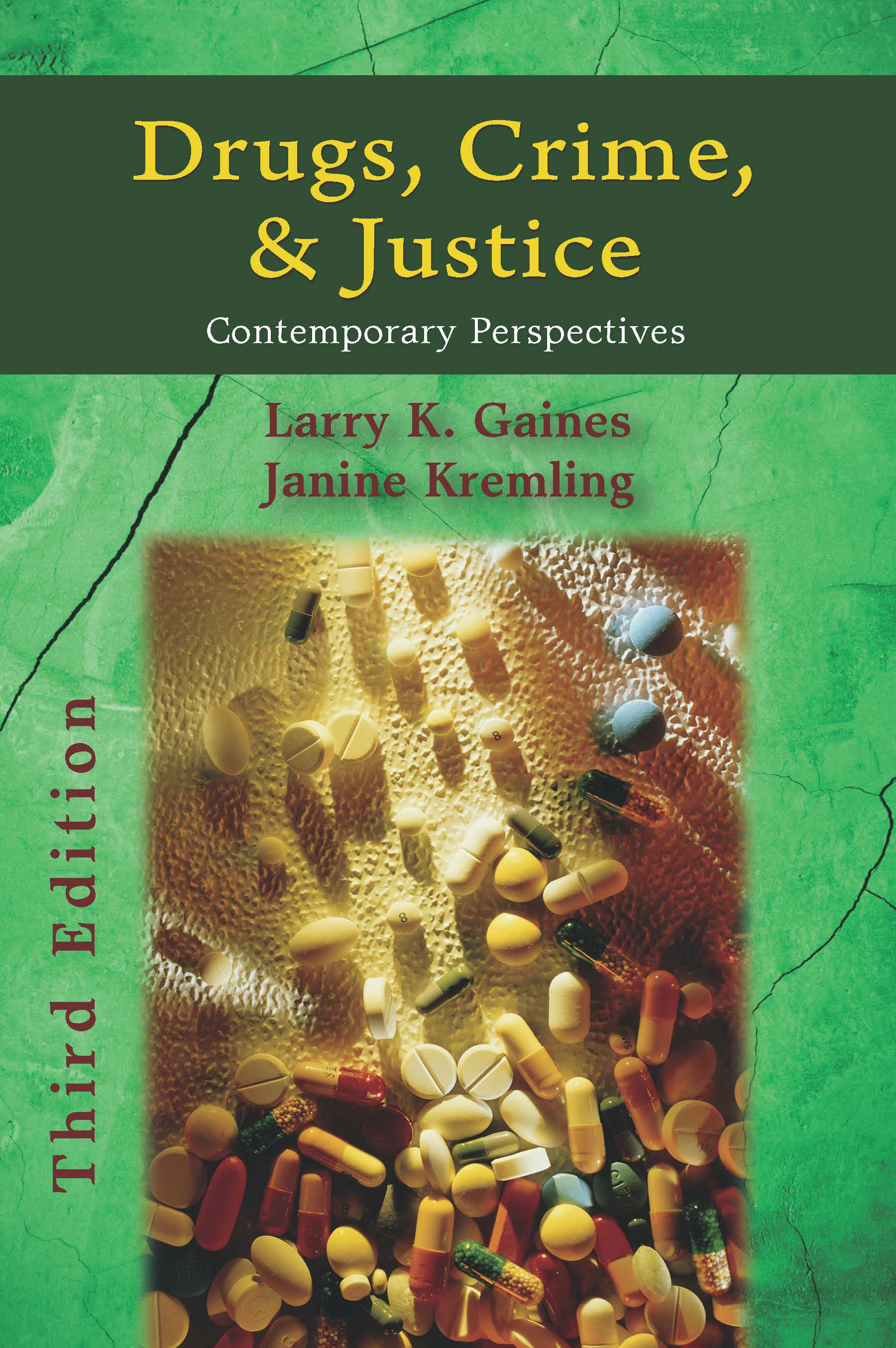Section I: DRUGS: Historical Perspectives
1. The American Experience with Stimulants and Opiates (David F. Musto)
2. The Struggle of Mankind against Its Deadliest Foe: Themes of Counter-Subversion in Anti-Narcotic Campaigns, 1920-1940 (Susan L. Speaker)
Section II: DRUGS: Causes and Effects
3. The Influence of Drugs on Brain Activity and Resulting Criminality (Stephen G. Tibbetts)
4. Comorbidity: Addiction and Other Mental Illnesses (National Institute on Drug Abuse)
5. Explaining Drug Crime with Criminological Theory (Christine Famega and D. Cody Gaines)
6. The Psychopharmacology and Prevalence of Drugs (Larry K. Gaines)
Section III: DRUG EPIDEMICS
7. Reflections on the Meaning of Drug Epidemics (Dale D. Chitwood, Sheigla Murphy, and Marsha Rosenbaum)
8. The Scourge of Methamphetamine (Janine Kremling)
9. Prescription Medication: A Medicated Nation (Janine Kremling)
Section IV: DRUG TRAFFICKING
10. Drug Trafficking (Larry K. Gaines)
11. The Youth Gangs, Drugs, and Violence Connection (James C. Howell and Scott H. Decker)
12. Research on Upper Level Drug Trafficking: A Review (Frederick Desroches)
13. Mexico's Drug Trafficking Organizations: Source and Scope of the Violence (June S. Beittel)
Section V: POLICING DRUGS
14. Policing the Drug Problem (Larry K. Gaines)
15. Asset Forfeiture: Origins and Present Status (John L. Worrall)
Section VI: TREATING THE DRUG OFFENDER
16. Principles of Drug Abuse Treatment for Criminal Justice Populations (National Institute on Drug Abuse)
17. Drug Treatment for Offenders: Evidence-Based Criminal Justice and Treatment Practices (Faye S. Taxman)
18. Drug Courts (Janine Kremling and Roger H. Peters)
Section VII: PERSPECTIVES ON THE DRUG PROBLEM
19. Women and Drugs (Pamela J. Schram)
20. Minorities and Drugs (Janine Kremling and Charles Adams)
21. Juveniles and Drugs (Larry K. Gaines)
22. The Relationship between Drugs and Crime (Larry K. Gaines)
Section VIII: ALTERNATIVE DRUG POLICIES
23. Marijuana Legalization: What Can Be Learned from Other Countries? (Peter H. Reuter)
24. Surgical Strikes in the Drug Wars: Smarter Policies for Both Sides of the Border (Mark Kleiman)
25. Drugs (Ethan Nadelmann)
26. Drug Policy: Examining the Idea of Harm Reduction as a Primary Goal (Larry K. Gaines)

576 pages, $61.95 list
1-4786-0203-1
978-1-4786-0203-3
© 2014
paperback
eBook availability
Drugs, Crime, and Justice
Contemporary Perspectives
Third Edition
The twenty-six articles in this edited volume provide perspective on the interrelated issues surrounding the use of drugs in society. Although drugs have long been a social problem, the importance of the issue—and the involvement of the criminal justice system—have varied across time. Public concern has typically centered on illegal drugs, but the drug issue today is even more complex given the impact of prescription drugs. Exaggeration has been a constant theme in the history of public policy on drugs, usually playing on public fear to demonize specific drugs and users. Some drugs are more dangerous than others. The variations in effects impact enforcement, prevention, and treatment. If we are going to criminalize drugs and drug usage, policies and penalties should be based on the relative dangerousness of a drug or class of drugs.
Policies can reduce harm, create harm, or both. Our current drug policies attempt to reduce harm through law enforcement. We arrest anyone involved in drug activities under the premise of protecting society. These same policies, however, result in the incarceration of large numbers of people; they are expensive; they overburden the criminal justice system; and they have lasting consequences for those caught up in the drug war no matter how minor their offenses. Drug policies should be weighed carefully, implementing those that result in the least amount of harm to society. The editors have collected timely articles that provide perspective and a foundation for an informed approach to addressing problems associated with drug use.
Policies can reduce harm, create harm, or both. Our current drug policies attempt to reduce harm through law enforcement. We arrest anyone involved in drug activities under the premise of protecting society. These same policies, however, result in the incarceration of large numbers of people; they are expensive; they overburden the criminal justice system; and they have lasting consequences for those caught up in the drug war no matter how minor their offenses. Drug policies should be weighed carefully, implementing those that result in the least amount of harm to society. The editors have collected timely articles that provide perspective and a foundation for an informed approach to addressing problems associated with drug use.